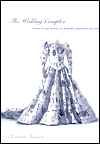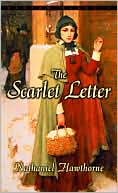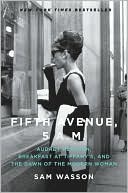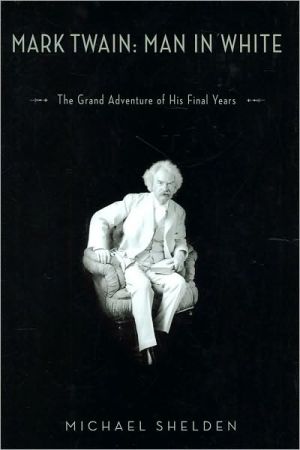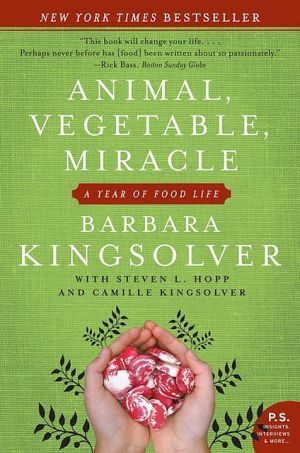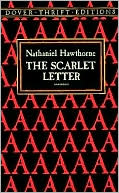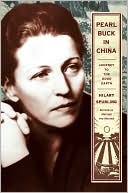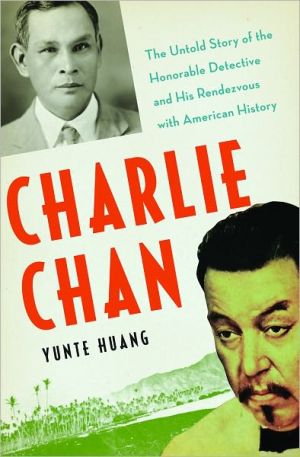The Wedding Complex: Forms of Belonging in Modern American Culture
In The Wedding Complex Elizabeth Freeman explores the significance of the wedding ceremony by asking what the wedding becomes when you separate it from the idea of marriage. Freeman finds that weddings—as performances, fantasies, and rituals of transformation—are sites for imagining and enacting forms of social intimacy other than monogamous heterosexuality. Looking at the history of Anglo-American weddings and their depictions in American literature and popular culture from the antebellum...
Search in google:
In The Wedding Complex Elizabeth Freeman explores the significance of the wedding ceremony by asking what the wedding becomes when you separate it from the idea of marriage. Freeman finds that weddings-as performances, fantasies, and rituals of transformation-are sites for imagining and enacting forms of social intimacy other than monogamous heterosexuality. Looking at the history of Anglo-American weddings and their depictions in American literature and popular culture from the antebellum era to the present, she reveals the cluster of queer desires at the heart of the "wedding complex"-longings not for marriage necessarily, but for public forms of attachment, ceremony, pageantry, and celebration. Freeman draws on queer theory and social history to focus on a range of texts where weddings do not necessarily lead to legal marriage, but instead reflect yearnings for intimate arrangements other than long-term, state-sanctioned, domestic couplehood. Beginning with a look at the debates over gay marriage, she proceeds to consider literary works by Nathaniel Hawthorne, William Faulkner, Carson McCullers, Vladimir Nabokov, and Edgar Allan Poe, along with such Hollywood films as Father of the Bride, The Graduate, and The Godfather. She also discusses less well-known texts such as Su Friedrich's experimental film First Comes Love and the off-Broadway, interactive dinner play Tony 'n' Tina's Wedding. Offering bold new ways to imagine attachment and belonging, and the public performance and recognition of social intimacy, The Wedding Complex is a major contribution to American studies, queer theory, and cultural studies. About the Author Elizabeth Freeman is Assistant Professor of English at the University of California at Davis.
The Wedding Complex\ FORMS OF BELONGING IN MODERN AMERICAN CULTURE \ \ By Elizabeth Freeman \ DUKE UNIVERSITY PRESS\ Copyright © 2002 Duke University Press\ All right reserved.\ ISBN: 0822329891\ \ \ \ Chapter One\ LOVE AMONG THE RUINS\ What is marriage, is marriage protection or religion, is marriage renunciation or abundance, is marriage a stepping-stone or an end. What is marriage.\ -Gertrude Stein, The Mother of Us All\ Between 1989 and the time of this writing, at least thirty-five Hollywood films, seventeen made-for-television movies, and eight national theatrical productions have put a wedding at the center of their plots. In a typical 1990s television season, eleven sitcoms opened or closed their series with a wedding; many national entertainment magazines produce "wedding issues" featuring celebrities; both network and cable stations regularly devote hour-long specials to home wedding videos and Hollywood weddings; talk shows and even the game show "Who Wants to Marry a Millionaire?" stage live weddings on camera; and new Internet wedding sites appear and disappear every day. Meanwhile, print and television ads pile up wedding images to sell things unrelated to marriage: a short list might include Pillsbury frosting, Visa Gold cards, Estée Lauder's Beautiful perfume, Loving Care hair dye, and MCI, with new ones appearing every time I try to finish this sentence. This explosion ofwedding images is different than, though obviously related to, the expansion of the bridal service industry or changes in the demographics of marriage. It looks like a national wedding complex in the psychoanalytic sense-America's terrible case of heterosexual exhibitionism, or perhaps its mass fixation on the primal scene of induction into that most insular relationship, the married couple.\ Yet many of the weddings cluttering the national mediascape are actually gay: the documentary short film Chicks in White Satin (dir. Elaine Holliman, 1992) won an Oscar for its look at lesbian weddings; Late Bloomers (dirs. Gretchen and Julia Dyer, 1996) featured two women marrying; the television shows Roseanne, Friends, and Northern Exposure have all featured same-sex weddings; and cover stories in the national gay magazines Out, The Advocate, and Girlfriends have focused on the planning and styling of same-sex weddings. Even contemporary representations of "straight" weddings often focus on a gay participant whose presence in the ceremony and exclusion from its results seems to guarantee heterosexual marriage, as in Four Weddings and a Funeral, Meet the Parents, My Best Friend's Wedding, The Object of My Affection, and In and Out. This proliferation of gay weddings, and gay people in weddings, hardly reflects a mainstream commitment to the idea of same-sex marriage, which has been rejected in many popular polls and state voting referenda as well as in the 1996 federal Defense of Marriage Act that defines marriage as a union between "one man and one woman." Even many lesbian and gay people, myself included, feel ambivalent about gay marriage. As I noted in the preface, some of us may believe that straight people should not have privileges that are denied to gay people but also feel that legalizing gay marriage would simply extend a set of privileges to monogamous, long-term, property-sharing couples at the expense of those whose lives cannot be so neatly packaged. A state that promotes marriage also disenfranchises people whose primary affinities do not get into the couple form and contributes to a culture that stereotypes these people as isolated failures, as immature and/or sexually indiscriminating, or as part of some mysteriously primitive social system.\ Yet if ratings and box-office numbers are any indication, many straight, gay, and even queer people may want to watch and participate in weddings for reasons that have little to do with a wish to obtain legal marriage. Audiences seem compelled by the legally nonbinding commitment ceremony, and willing to be both voyeur and witness to the fantastic ritual of people making promises with no legal contract to enforce them. This compulsion may be undergirded by a longing for inclusion or a wish to watch the ceremony collapse under the weight of its own solemnities, but in the case of queers, we may also identify with the expansive, figurally complex sociability suggested by some element of the wedding ritual. Many contemporary weddings, that is, suggest provocative visions of what the wedding itself might do beyond inaugurating a marriage; indeed, some of the richest contemporary images of weddings have little to do with gay or straight unions. Instead of featuring an ordinary couple with extraordinary accessories (as in the scuba, nudist, or bungee-jumping weddings of the 1970s and 1980s), quite a few mass-mediated wedding spectacles of the last decade or so dramatize ties altogether outside of, beyond, or even antithetical to couplehood itself.\ For instance, the wedding has become a means of figuring and performing a relationship between persons and objects. A recent television ad for the Mazda automobile features a woman in full bridal regalia, sans groom, promising to "love, honor, and obey" in a vow that cuts two ways: in order to drive the car she must submit to its superior technology, yet that very technology enables the car to respond to her driving technique. This wedding registers the possibility of will, of intentionality, of savoir faire in a material landscape, of mastering consumer culture's vast terrain. Using the wedding to link people and objects seems also to create a space of permission to publicize other social ties-friendships, extended family, nonparental intergenerational commitments, subcultural alliances, and so on. For example, a TV advertisement for Nike women's sportswear shows a group of girls playing soccer, accompanied by a voice-over of females chanting wedding vows. Rather than a kiss passing from lip to lip, the soccer ball passing from Nike-clad foot to foot bonds the girls; the exhortation to "love, honor, and obey" portrays teamwork in terms of emotional ties rather than political or even athletic goals. Accompanied by another chant (say, the pledge of allegiance), the soccer game might be a figure for feminist activism in the civic sphere. But it would lose the erotic torque it gains from the wedding vows, which make the game into a specifically feminine expression of same-sex bonding, both suggesting and deflecting lesbian possibilities.\ This overproduction of weddings seems odd in a country that has, since the formation of the New England colonies that count as the official beginning of its history, purported to follow a juridical rather than religious model in the making of its marriages. The civil courts have the last word on the validity of nuptial unions in the United States, and even the theocratic Puritans insisted that marriage ceremonies take place in secular spaces, in front of lay officials rather than clergy. Given this history, one would think that residents of the United States could do without weddings altogether, simply registering partnerships the way they register births, voter status, automobiles, and patents; this is more or less the aim of the contemporary movement to extend legal and economic benefits to domestic partnerships or registered households. One might even expect to see long-term commitment dissociated altogether from state law, so that the decision to share living facilities, property, sexual pleasure, or child-rearing obligations with another person would be irrelevant to the governmental distribution of benefits and privileges.\ Yet neither the reformist domestic partnership movement nor the more radical argument for disestablishing marriage takes seriously the need for whatever it is that weddings do: at the very least, they at once symbolize and multiply social ties, work in and with time, allow someone to be the star of a show, suggest the possibility of bodily and social transformations, and offer an elaborate series of visual icons to play with. Since the mid-1930s, the wedding industry has capitalized on these needs in order to promote an endless variety of goods and services. More recently, the national gay movement has tapped into these needs to advocate for the extension of rights and privileges to same-sex couples. Concurrently, the wedding seems to work as an emblem for the condition of belonging to constituencies beyond (if also sometimes constitutively connected to) the male-female couple: to proper gender, extended family, ethnic or religious constituencies, the nation, or a particular niche market. Yet, rather than producing these latter forms of belonging as homologous to couplehood-so that couplehood becomes, as Doris Sommer puts it, "the shorthand for human association"-the wedding often inadvertently plays forms of belonging against one another, so that the icons of one social configuration question the centrality of another. Relatedly, some of the wedding's specifically temporal operations may actually undermine its seemingly monumental ability to reduce a variety of social matrices to mere extensions of the marital dyad.\ One way to get at these possibilities is to separate the wedding, at least provisionally, from its ostensible purpose of inaugurating a marriage. For if marriage is still imaginable without a "proper" wedding-as in a common-law union or courthouse registration-a wedding is supposed to serve as the inevitable precursor to a marriage. Yet the examples above, and most of the texts this book examines, partially or completely sunder the wedding from its legal ramifications, reveling in the expressive, theatrical, and symbolic aspects of the ritual. Focusing on the wedding itself reveals possibilities that are lost when the purpose and result of "wedding" is presumed to be marriage as domestic law defines it: a monogamous, enduring, opposite-sex dyad with biological reproduction as its ostensible raison d'être. By undoing this presumption, texts that foreground the wedding as a production return to and rework the possibilities embedded in the ritual itself, asking in what ways the kinds of weddings people have, or dream of having, or thought they had, might be indices for forms of social life made possible in one domain but impossible in another, or in one historical moment but not another-or might even be avatars for changes in what Raymond Williams calls "structures of feeling," new senses of collective being felt viscerally, in advance of their institutionalization in discourse. In short, the desire for the symbolic apparatus that is the wedding and the legal apparatus that is marriage cannot be reduced to one another. It is important to at least momentarily unchain the wedding from marriage or even couplehood and to explore the dynamic between weddings and the marriages they supposedly stand for or produce.\ In 1991, Su Friedrich made a film that did just that. First Comes Love premiered at that year's New York Lesbian and Gay Experimental Film Festival, where some audience members complained that it was merely an advertisement for the gay marriage movement. Shot in shimmery black-and-white, 16-millimeter film, this twenty-two-minute montage of four Italian Catholic weddings, interrupted by textual statements about same-sex marriage, does at first glance Seem to traffic in mere envy of heterosexuality rather than critique it and to promote couplehood over other forms of intimacy. In its central shot, for instance, the bride and groom are seen from high above, standing at the altar, with the white aisle runner bisecting the frame and Richard Wagner's "Bridal Chorus" as the sound track. This music fades into the sounds of Gladys Knight singing "It Could've Been Me." Here, the filmmaker seems to "fall into line with the ritual," as one reviewer asserts, aligning bride and groom, image and sound, visual splendor and emotional fulfillment in exactly the way that marriage is supposed to align two people with each other and the state.\ The altar scene cuts to an intertitle that reads, "If two men or two women wanted to legalize their commitment to each other, for any reason, they would be denied this privilege in the following countries." This text is followed by a three-minute-long, alphabetized list of nations from Afghanistan to Zimbabwe. In a white typeface against a black background, the intertitle creates a column in the very center of the screen, exactly matching the white aisle runner, and then visually interrupts and replaces the wedding processional as the words stream upward and out the top of the frame. This text steals the whiteness and symmetry of the wedding to articulate what the viewer can now recognize as a new global political order. The alphabetical listing of these locales in a column aligns them along an axis other than the ones that officially conjoin nations, like geographic proximity, trade agreements, monetary systems, political theory, or religious ideology-specifically, that of monogamous heterosexual marriage. Depicting a "mass wedding" of individual countries into a world ordered by hetero-marital supremacy, First Comes Love is a momentary reminder that marriage is not only a relation between two people but also part of the process by which states ally with one another and create new citizens, especially through reciprocal immigration policies that naturalize "foreign" spouses.\ Thus Friedrich's elaborate engagement with the wedding ceremony might in fact serve a certain global sexual imperialism, promoting marital couplehood as a regime of sensation, subjectivity, and social affinity that can cut across existing registers of race, class, nation, and even sexual orientation to produce something like a spousal planet. But this possibility is exactly what the film slowly unsettles, for it actually dramatizes the wedding as a queer counterpossibility to what it has pointedly demarcated as a multinational association of hetero-supremacist countries. On the formal level, First Comes Love breaks down the wedding, providing opportunities for reading it as a scene in which identity and belonging can be complicated rather than simplified, and alternative affinities between people can be distinguished from rather than merged with a new marital world order.\ This breakdown begins with the film's opening. Over the words "First Comes Love ... a film by Su Friedrich," children's voices chant a rhyme: "Lisa and George sittin' in a tree. K-I-S-S-I-N-G. First comes love, then comes marriage, then comes Lisa with a baby carriage." Narrating a male-female romance that ends as usual, with the woman doing all the child care, this chant is certainly a primer for compulsory heterosexuality. But the title "First Comes Love ..." leaves the rhyme unfinished, substituting an ellipsis for the inevitable progression from kissing, to love, to marriage, to reproduction, to the asymmetrical allocation of gendered tasks. On the one hand, Friedrich certainly seems to intend the ellipsis to figure the lack of legal sanction for same-sex couplehood: for lesbian and gay partners, the title suggests, first comes love, then comes nothing. Certainly the chant that follows the title might be filled in with new content, like "Wendy and Lisa" or "Gilbert and George." Yet the ellipsis also creates a space of possibility wherein the temporal logic of the chant might be undermined: "First Comes Love ..." and next, or before, comes what? In other words, what is missing is not just the legal status of "marriage" but the seriality and causal logic of "then."\ Rather than simply repeating the chant with a lesbian difference, though, Friedrich undermines its progressive narrative with her camera work. She shoots the weddings from the position of what one reviewer calls "part anthropologist, part kid at the candy-store window." As an "anthropologist," of course, she reverses the power relations of ethnographic filmmaking by voyeuristically examining the dominant straight culture from a marginal point of view. But as a "kid," she also aims to suture the viewer into the "before," the infantilized subject position of someone who cannot enter into the wedding's symbolics or fits imperfectly into its pageant. From the sound of children's voices chanting a progression they cannot yet enact, the film segues to its opening shot of two children. Later, the image of a little girl climbing rather laboriously up the church steps cuts to one of the bridesmaids ascending much more smoothly. In other scenes, Friedrich focuses on details that only someone of a child's height would see straight on or she positions the camera from about three feet off the ground. First Comes Love, in short, uses the child as a figure for the polymorphous desires as well as prior personal and collective histories that marriage aims to erase. The point of view of the subject left below or behind, in a position of longing and incomprehension, halts the developmental logic of the playground chant, for that "first" point of view returns again and again.\ \ \ \ \ Excerpted from The Wedding Complexby Elizabeth Freeman Copyright © 2002 by Duke University Press\ Excerpted by permission. All rights reserved. No part of this excerpt may be reproduced or reprinted without permission in writing from the publisher.\ \
PrefaceAcknowledgments1Love among the Ruins12The We of Me: The Member of the Wedding's Novel Alliances453"That Troth Which Failed to Plight": Race, the Wedding, and Kin Aesthetics in Absalom, Absalom!704"A Diabolical Circle for the Divell to Daunce In": Foundational Weddings and the Problem of Civil Marriage1015Honeymoon with a Stranger: Private Couplehood and the Making of the National Subject1466The Immediate Country, or, Heterosexuality in the Age of Mechanical Reproduction178Coda210Notes221Selected Bibliography261Index279
\ From the Publisher“The Wedding Complex by Elizabeth Freeman is an extremely original and important work. Freeman takes a distinctly new and different approach to American canonical texts, asking what forms of belonging and desire they produce outside of normative marital unions. For Freeman, the wedding produces and imagines social and cultural relations and kinship forms even as the heterosexual marriage erases these other modes of desire.”—Judith Halberstam, author of Female Masculinity\ “Elizabeth Freeman’s The Wedding Complex performs a crucial scholarly and public service—disentangling the messy, expansive, uncontainable work of the wedding from the normative regulation of the law of marriage. This book is sharp, funny, and deeply significant to current understandings of what is at stake in what are reductively called ‘the marriage debates.’ A must-read for activists and policymakers as well as across the disciplines.”—Lisa Duggan, author of Sapphic Slashers: Sex, Violence, and American Modernity\ \ \
